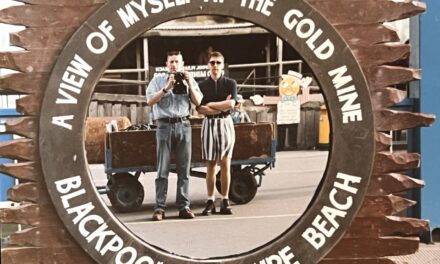The stately homes of England are a story in themselves. That of Rawtenstall’s Whitaker Museum & Art Gallery begins with Oak Hill, domicile to the Hardman family whose patriarch George amassed his fortune in the textile trade. It was purchased in turn by another local industrialist, Richard Whitaker, who bequeathed the building his name before donating it and its gardens to the town.
Contagious Acts, sited in two gallery spaces and throughout the present day Whitaker, takes a knife to the official record, prising it open, reading between its lines. In doing so, artist Jamie Holman locates the pearl of lives less noted; those in a different class from the hide-bound historians entrusted to narrate the procession of Empire. Less interested in those who sequestered wealth than those whose toil was employed in their service, Holman foregrounds the workers anonymised by mass production.

Contagious Acts. Photo by Jack Bolton.
Or, on more than one occasion, trampled underfoot. The horse is a recurring motif across the exhibition, asserting the authority of those who govern against those who might otherwise unsaddle them. Whether ridden by the yeomanry, flashing sabres against a peaceful assembly at Peterloo, or by mounted police charging against picketing miners at Orgreave, its reins are pulled on behalf of those who reign.
The clog in the machinery of oppression by horseback is symbolised by the large glass marbles that act as a pedestal in one gallery, and a floor in another. Representing the ball bearings purportedly strewn by strikers in Haslingden during the 19th century, scattered in the hope of causing both steed and rider of those charged to break them to come a-cropper, they mass with mischievous intent.
The image is almost a slapstick one, and Holman’s works, while serious in intent, are never dour. For example, In Every Home A Heartache subverts the sugar-free clichés of the studio photography family portrait, every rough edge filed to pastel smoothness, by accessorising the paternal figure with a balaclava. The piece works both with the immediacy of a single panel gag, upending conventions, and something darker, lingering like a half-recalled nightmare. Whereas Holman’s marbles scintillate with childish pleasures, his balaclavas carry less playful associations; the attempted self-erasure of the rioter, the terrorist or the armed robber.
In Every Home A Heartache is mounted in a gallery in which the disembodied voice of Christopher Eccleston recites Holman’s A Concise History Of Industrial Violence, 1900–2000, a list of the century’s disturbances and discontents, looping like a flame-drunk moth that itself takes up gallery space, its essential endlessness leaving the listener little room to think for themselves. A companion piece, narrated by Rawtenstall’s own Jane Horrocks, reciting Holman’s precis of the previous century, plays out in the gallery below in a timeline which complements the tapestries of state violence which ambiguously prettify its walls.

Contagious Acts. Photo by Jack Bolton.
The density of Holman’s research and engagement is palpable, so that it’s possible to view the finished works as a kind of counter-curation, one that undermines the narrative of the permanent collection, and, in doing so, redresses the imbalance of privilege in favour of the many, at the expense of the few.
There’s a skew, perhaps towards a particularly narrow stripe of male working-class culture – more Oasis, say, than The Smiths. For all that the celebratory and territorial violence of the Perry Boy might sit uncomfortably with my own sensibilities, it’s hard to deny that it’s a subculture that’s rarely afforded gallery space. Nonetheless, it’s difficult not to cavil when football hooliganism is afforded a kind of moral equivalence with, for example, the Poll Tax Riots or Stop the War protests.
Of course, evoking such qualms of discomfort might very well be Holman’s intent. He has, after all, written of the ‘crisis of identity’ in contemporary Britain, and this aspect of Contagious Acts chimes with the Netflix drama Adolescence in its tacit recognition that censure without understanding can push young men further into the margins. Perhaps the greatest achievement of Contagious Acts is that it pulls its subjects back out of the sidelines, and on to centre stage.
By Desmond Bullen, Chief Arts Correspondent
Main image: credit Jack Bolton

Contagious Acts. Photo by Jack Bolton.
Contagious Acts is on until June 1, 2025. For more information about The Whitaker Museum & Art Gallery, click here.








